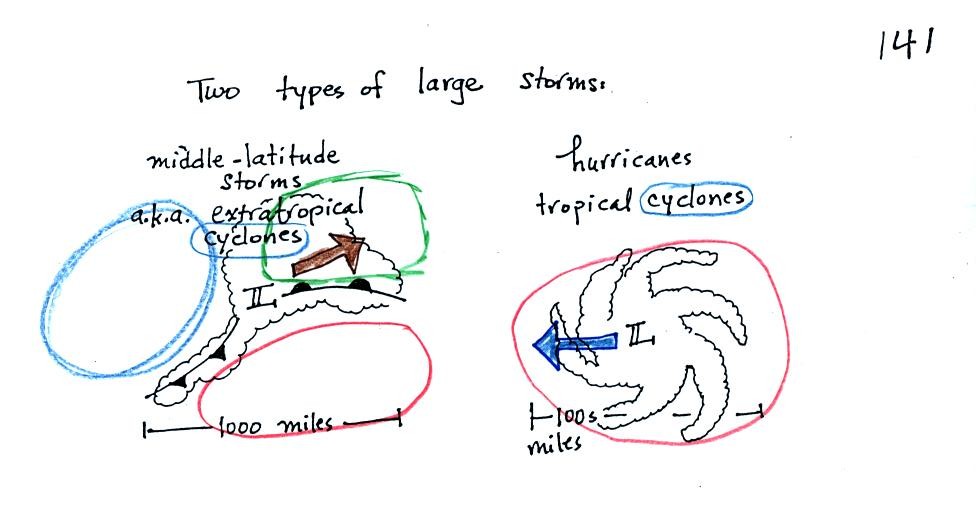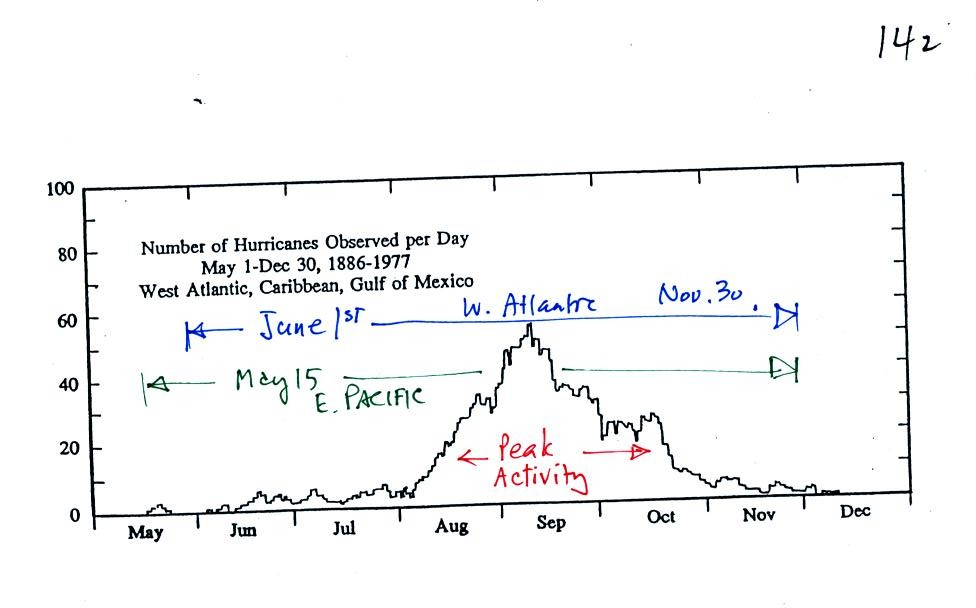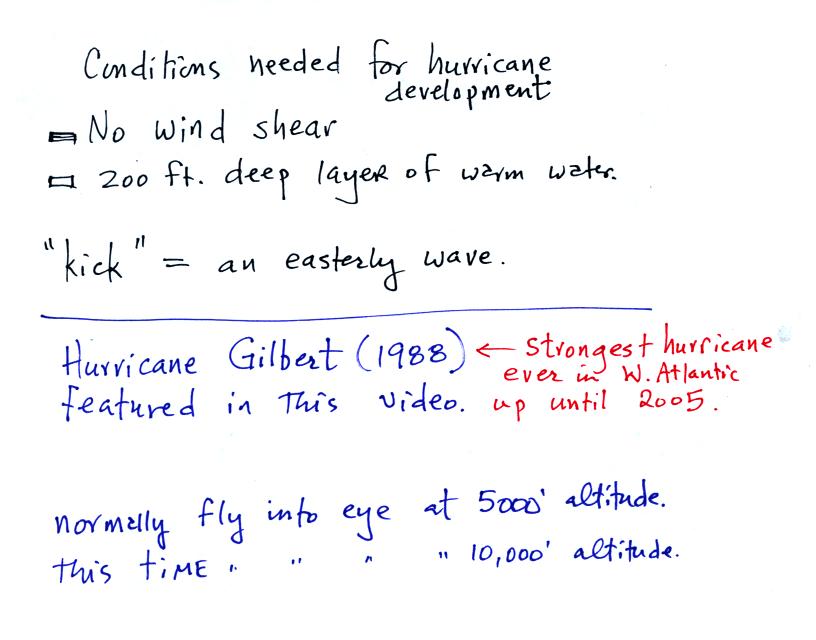
| Differences |
Similarities |
Differences |
| Found at middle
latitudes (30 to 60 latitude) Can form over land or water |
The term cyclone
refers to winds
spinning around low pressure. Both storms have low pressure centers. (the low pressure becomes high pressure at the top of a hurricane) |
Found in the tropics (5 to 20 latitude) Only form over warm ocean water |
| Movement is from west to east | Upper level divergence can lower the surface pressure and cause both types of storms to intensity |
Movement is from east to west |
| Warm and cold air masses brought together by converging winds | Warm moist air mass only | |
| Storm winds intensify
with
altitude |
Storm winds weaken
with altitude |
|
| Strongest storms usually occur in the winter |
Strongest storms late summer to fall |
|
| generally larger than
hurricanes |
usually smaller than middle
latitude storms |



